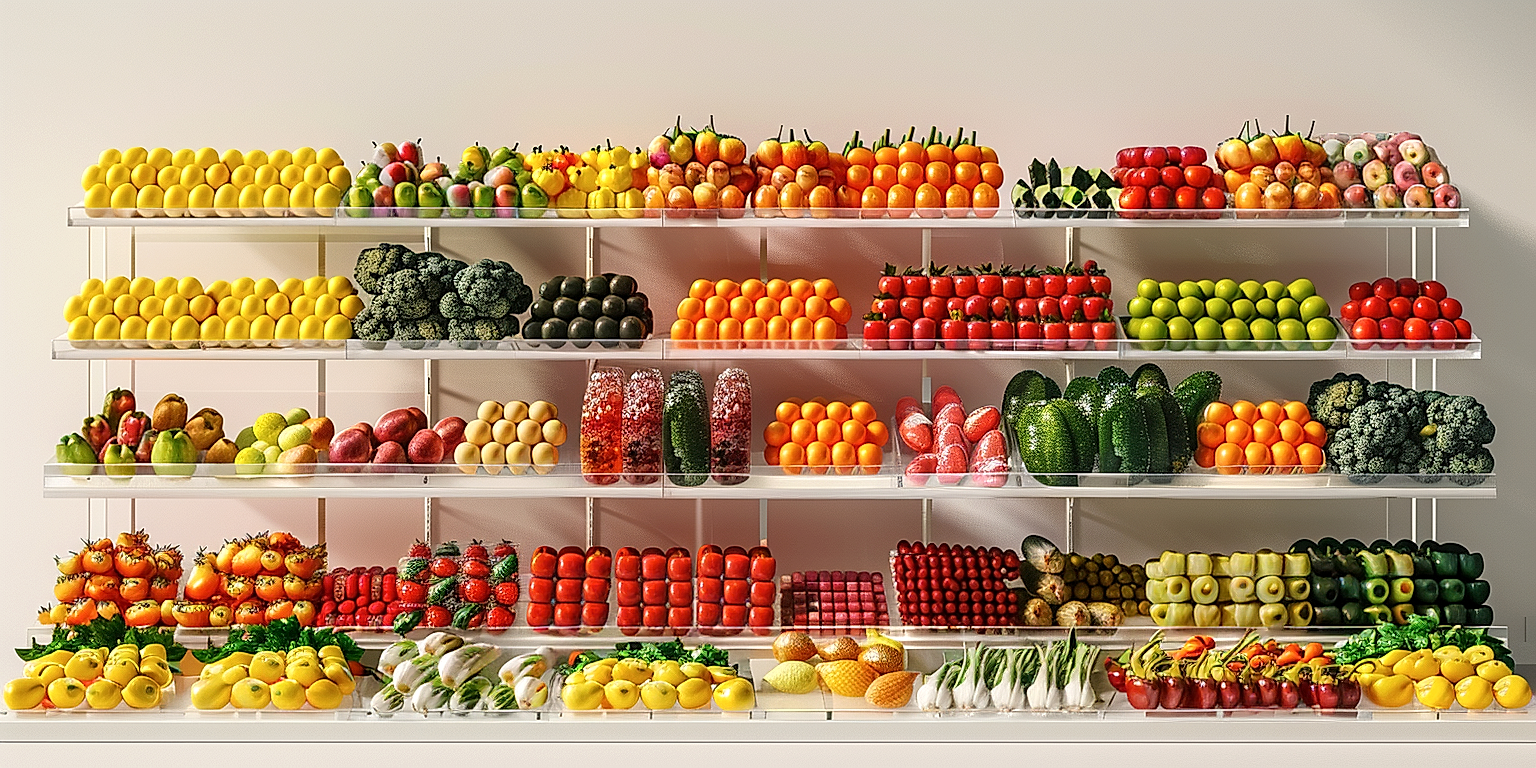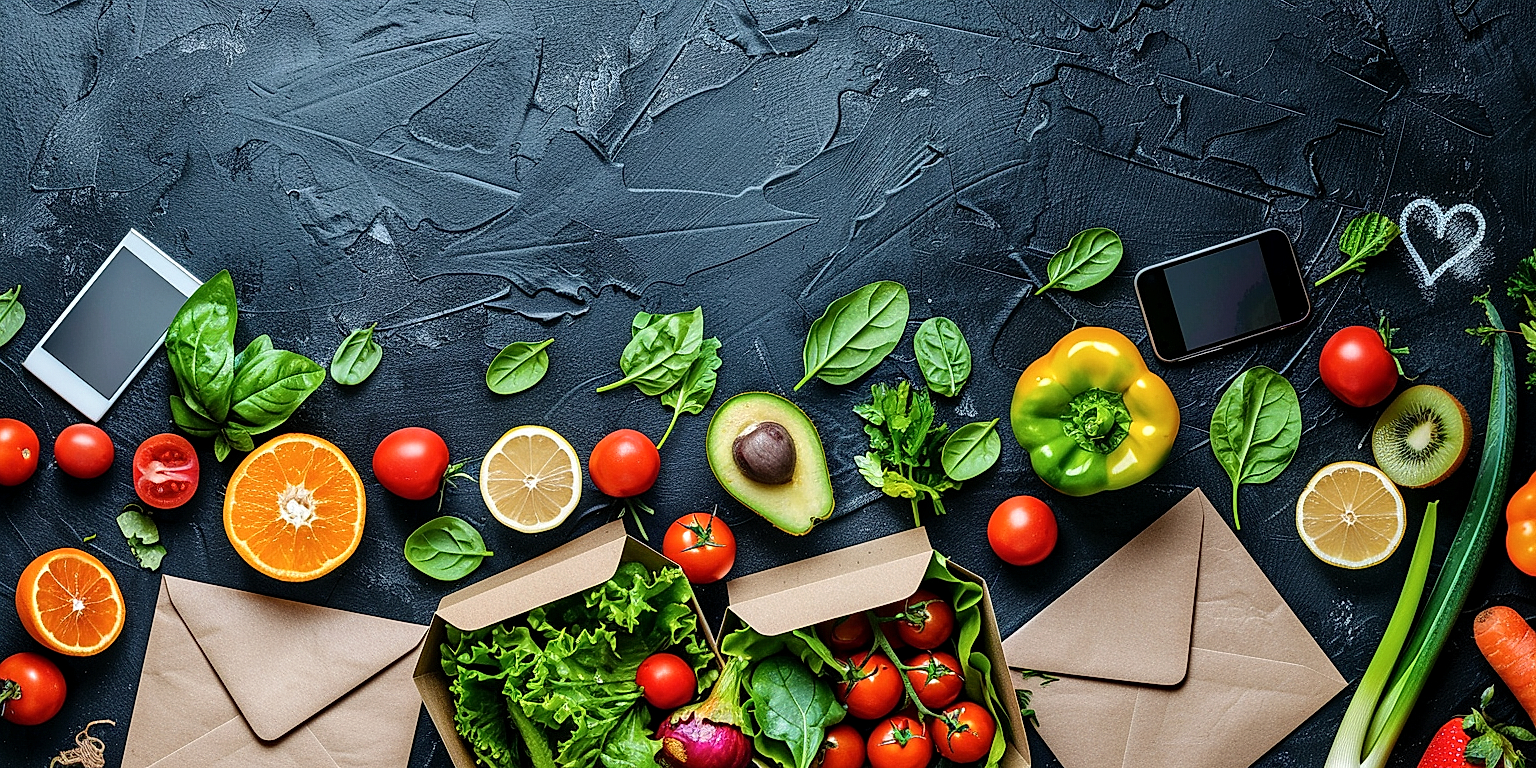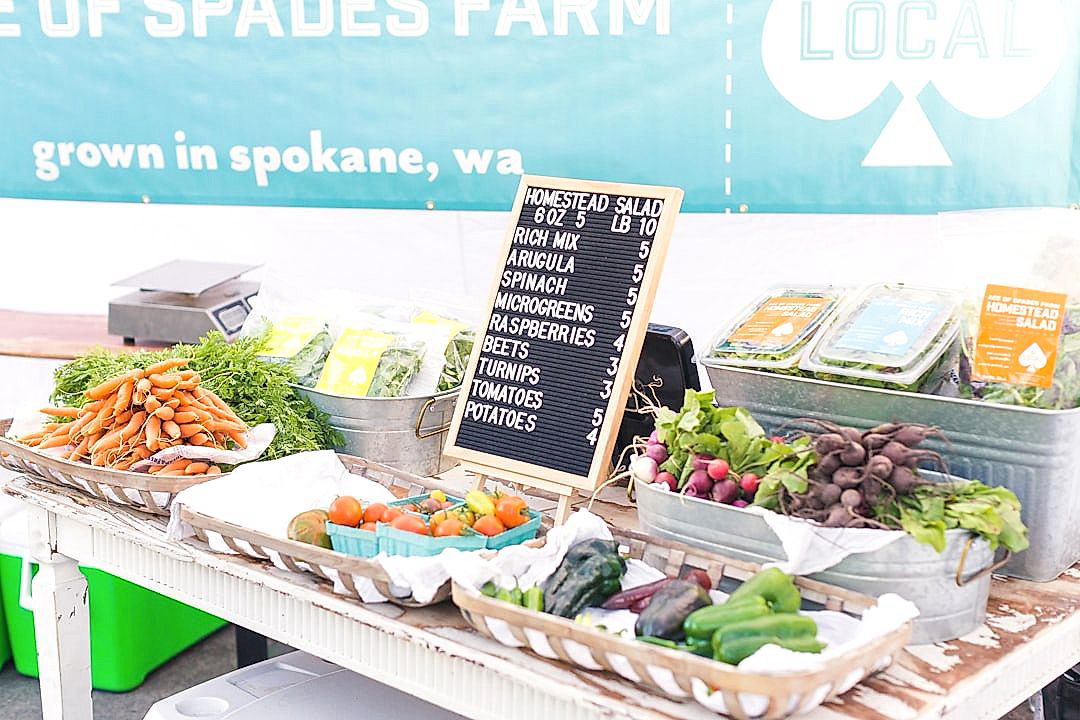The retail industry is constantly evolving to meet changing customer demands and expectations.
In the increasingly competitive landscape of grocery retail, store design and layout can significantly influence shopping behaviors.
The arrangement of produce plays a key role in appealing to shoppers, driving sales, and enhancing the overall customer experience.
Innovative and strategic retail layouts are even more crucial in today’s digital era.
This piece delves into various novel approaches and latest trends in designing retail spaces for produce stores.
Readers can look forward to insightful discussions on these critical aspects of modern retail strategy.
New Retail Layouts For Produce Stores
1. Farmers Market Style Open Display Layout
The Farmers Market Style open display layout is a favored design among innovative produce stores seeking to enhance customer experience and boost sales.
This layout essentially involves displaying fresh produce in a fashion that mimics the look and feel of a traditional farmers market.
One of the core objectives of this layout is to create a natural and inviting environment that encourages customers to browse and explore.
Unlike the standard grocery store setup where items are neatly aligned on shelves, this setup leans towards a more relaxed, casually arranged layout.
Customers appreciate this layout as it gives them a sense of discovery and adventure, enhancing their overall shopping experience.
Since the products are accessibly displayed, people can easily pick up, scrutinize, and smell the produce – a major determinant of purchasing decisions, especially for fresh produce.
The open display layout also adds an element of transparency, building trust with customers as they can fully see the quality of the produce being sold.
This layout maximizes product visibility and encourages impulse purchases.
It allows customers to see a variety of products at once, tempting buyers to add more items to their basket than initially intended.
A smart retailer will strategically place the most colorful and appealing produce in places where they will catch the customer’s eye, luring them further into the store.
However, great care must be taken to maintain the quality and freshness of the produce displayed, as the open layout exposes them to light, heat, and handling which can accelerate decay.
Tactful arrangement of produce is crucial – placing delicate items such as berries on top while sturdier ones such as squashes at the bottom of the display.
Implementing this layout can effectively blends the comfort and nostalgia of a farmers market with the convenience and selection of a commercial grocery store.
While it may take more effort to manage, the increase in customer engagement and the potential for boosted sales definitely make it an attractive option for contemporary produce merchants.
Overall, the Farmers Market Style open display layout is an effective way to optimize store space, enhance product visibility, and ultimately boost sales.
By making products more approachable and inviting, a produce store can engage customers more effectively and create a memorable shopping experience that encourages repeated visits.
2. Refrigerated Wall-lined Section Layout
The Refrigerated Wall-lined Section Layout is an effective strategy of organizing a produce store in a visually appealing and practical manner.
This design ensures freshness of products, emphasizing temperature control.
As customers walk through the store, they are greeted by a wall of freshness that instantly communicates the quality of your produce.
The wall-lined refrigerated sections are ideal for storing fruits, vegetables, and other products that require constant refrigeration.
One of the biggest advantages of this layout is that it maximizes the available floor space.
This refrigerated wall-lined section layout allows for a clear and convenient view of the products, making it easy for customers to approach and select items of their liking.
The strategic placement of refrigerated sections along the walls ensures that the customers have easy and direct access to the produce, enhancing the overall shopping experience.
The light reflecting off the refrigerated wall sections enhances the natural beauty of colorful fruits and vegetables, making it an attractive display.
This strategic layout encourages impromptu purchases as customers are exposed to a variety of produce they might not have considered initially.
The cold ecosystem created by a refrigerated layout extends the shelf life of your products, reducing spoilage and loss.
Implementing this layout showcases the store’s commitment to the quality and freshness of their offerings.
The visibility of the products from different sections of the store invites customers to explore more, driving footfall across the store.
Moreover, the refrigerated wall-lined section layout gives a modern and sleek look, levitating the store aesthetics.
This layout assures efficient use of energy as well, as the cooling is focused mainly on one part of the store.
Thus, employing a Refrigerated Wall-lined Section layout is not just an innovative approach for organizing a produce store, but it also brings in benefits in terms of sales, store aesthetics, and energy efficiency.
3. Island Stands for Exotic Produce
Among the attractive designs for retail layouts in produce stores, Island Stands for Exotic Produce stand out for their uniqueness and allure.
These island stands are typically placed in the central parts of the store to draw attention immediately.
The concept behind this layout is to exhibit the unusual and rare varieties of fruits and vegetables that the store offers.
Crafting an island stand design, therefore, requires a certain attentiveness to presentation and aesthetics to enhance the appeal of the exotic produce on display.
In essence, the key to a successful island stand for exotic produce is the balance between functional design and appealing displays.
This layout strategy doesn’t just function as a visual feast but serves the practical purpose of organizing store space efficiently.
Moreover, strategic positioning of these stands can facilitate the flow of customer traffic, guiding shoppers intuitively to explore every corner of the store.
The spaciousness around island stands provides ample room for several customers to shop simultaneously, improving the customer shopping experience.
Additionally, this island stand layout helps in creating a distinct identity for the store given the special emphasis on exotic offerings.
Exotic produce, due to its unique and sometimes unusual visual appeal, plays a significant role in setting the mood and the overall ambiance of the store.
Visual cues like color, shape, and size used innovatively can communicate certain ideas about the items’ unusual origin, stimulating curiosity and interest in shoppers.
Although the presentation is crucial, it is equally important that the island stands are designed to maintain the freshness and prevent damage to the produce.
For example, delicate items could be placed at an accessible height in ventilated trays to preserve their quality, while more robust fruits can add a touch of the exotic at the bottom level.
Island stands are also perfect for cross-merchandising, where related products are grouped together to encourage additional purchases.
To sum up, the Island Stands for Exotic Produce serve as the centerpiece in the retail layout of produce stores, providing not just a striking visual element, but also an effective way to showcase the store’s unique offerings and enhance the overall shopping experience.
4. Self-Service Bulk Items Section Layout
The shift towards self-service bulk items is increasingly becoming a common feature in modern retail stores, especially produce stores.
Creating a self-service bulk items section in a produce store offers various benefits, including reduced packaging waste, improved product freshness, and enhanced customer engagement.
The layout of this section should offer ease of access and clear visibility of the items.
It’s crucial to ensure that all the bulk items are grouped together in this section to prevent shopper confusion.
Retailers should ensure that items such as grains, nuts, spices, and other loose produce are contained in transparent, accessible bins to allow customers to view and select the quantity they want.
Additionally, this section should be accompanied by a weighing scale and labels for marking the weight and product name.
It’s crucial to adhere to the hygiene safety measures, particularly in the self-service bulk items area.
The store should provide disposable gloves, spoons, or scoops for customer use to prevent direct contact with the bulk items.
An effective system to manage rotate stock is critical, as this ensures the items remain fresh and appealing to the customers.
Reconfiguring a section of your store to accommodate self-service bulk items can help highlight the value you place on sustainable practices.
Price information should be very clear and easy to understand.
Coupled with bright and informative signage, this section requires regular maintenance to uphold the overall store appearance.
Visible and easy-to-follow instructions on how to purchase these bulk items will enhance customer experience.
Incorporating a self-service bulk items section can be a great way of diversifying your retail store layout.
Offering these products in a separate, devoted section of your produce store can help you stand out from other retailers.
5. Color-Themed Organization Layout
The Color-Themed Organization Layout presents an innovative and visually appealing approach to arranging produce in a retail store.
Unlike conventional categorization methods, color-themed organization allows for a more attractive presentation of products, enhancing the overall shopping experience.
The vibrant hues of fruits and vegetables can be strategically used to draw customers’ attention and trigger impulse purchases.
With this layout, the psychology of color in marketing and retail can be wielded to steer customers towards certain items and sections of the store.
Color coordination can help create a sense of order and harmony that can entice customers and stimulate their senses.
For instance, grouping all red fruits and vegetables together – apples, tomatoes, cherries, strawberries – creates a strong visual impact and can entice customers to browse and purchase more.
This method of organization also encourages eye movement throughout the store, causing customers’ eyes to dart from one color section to another, increasing the probability of them discovering and buying items they hadn’t planned on.
Thoughtfully designed color-themed layouts can also promote healthier choices.
By highlighting a mix of colorful and nutrient-rich fruits and vegetables, retailers can subtly guide customers towards healthier options.
Moreover, a color-themed layout can enhance the overall aesthetic appeal of the store, making it more Instagram-worthy and encouraging customers to share their shopping experience on social media, providing free advertising for the store.
Owing to the inherent variability in the colors of fresh produce, this layout will require regular maintenance to ensure the color-themed displays remain fresh and visually engaging.
To prevent customer confusion, price tags and product labels could be color-coded correspondingly to seamlessly blend with the layout, providing information without disrupting the overall visual presentation.
Additionally, this layout can present opportunities for themed marketing campaigns, such as featuring ‘Red Fruits and Vegetables’ for Valentine’s Day or ‘Green Produce’ around St. Patrick’s Day.
Thus, while the color-themed organization layout does demand some extra time and creativity, it could significantly enhance customers’ engagement with the fresh produce section in a retail store.
6. Fresh Cut and Packaged Corner Display
One of the newer trends in retail layouts for produce stores is the creation of a Fresh Cut and Packaged corner display.
This layout is designed to appeal to customers who are looking for convenience and freshness in their produce purchases.
The corner display of pre-cut and pre-packaged fruits and vegetables allows customers to grab quick, ready-to-eat items easily.
By positioning the display in a corner, the design makes efficient use of space and creates a visually distinct section within the store.
Through its strategic positioning and unique offering, the Fresh Cut and Packaged corner display can serve as a major draw for customers, increasing both foot traffic and sales.
Retailers can tailor the offerings based on local consumer preferences and seasonal availability, ensuring that the display remains dynamic and engaging to customers.
From a practical standpoint, this layout also helps to prolong the shelf life of fresh produce items, as these are kept chilled in their packaged form.
This setup also provides an opportunity to showcase a wider variety of products, including more exotic fruits and vegetables, and to introduce customers to new items they might not normally purchase.
An additional benefit is the opportunity to implement hygienic packaging solutions that provide an extra layer of safety for consumers concerned about food safety.
Packaging can also be used as a tool for branding and information dissemination, with details about product origin, nutritional facts, and ideas for preparation printed directly on the packaging.
In addition, the corner design layout makes it easy for store staff to restock the area, ensuring a constant supply of fresh items available throughout the day.
It also aids in store’s aesthetic appeal by creating a perceivable zone of freshness and convenience.
It is also an effective strategy for reducing waste, as precut fruits and vegetables that are near their expiration date can be used in salad mixes or prepared food items sold in the same section.
However, great care is required to maintain freshness and quality, as the cut surfaces of produce can deteriorate faster than whole fruits and vegetables.
Overall, the Fresh Cut and Packaged corner display represents a promising trend in the retail produce market, combining consumer convenience with efficient space utilization and product diversity.
7. Circular Fruit and Vegetable Stand Layout
To begin, the Circular Fruit and Vegetable Stand Layout is a retail design concept that focuses on efficiently displaying fruits and vegetables in an aesthetically engaging way.
Rejecting the linear displays common in many supermarkets, this layout utilizes curved, circular stands to create more eye-catching and dynamic displays.
The draw lies in the fact that the circular orientation of the stands affords 360-degree visibility, allowing customers to easily view and access the produce from every angle.
This layout optimizes space utilization, enabling retailers to display a larger variety of fruits and vegetables in a limited space.
The shape of the stands also provides a natural flow to the customer journey through the store, gently guiding shoppers around the produce section and exposure to wider variety of products.
Unlike linear stands, the unique shape of the round stands facilitates better visual merchandising, which can help to boost sales substantially.
Another advantage of this Layout is the potential for height variation within the display, making it possible to create more visually compelling displays that pique customers’ interest.
Importantly, the Circular Fruit and Vegetable Stand Layout also promotes hygiene and prevention of spoilage as the rounded design discourages the piling up of produce.
The design ensures that shelves are not congested, which extends the life of the produce and reduces retail waste.
In terms of visual impact, the circular stands lend themselves to creative displays that can make a store look more distinctive and appealing, especially when compared to traditional linear layouts.
In an increasingly competitive retail environment, the Circular Fruit and Vegetable Stand Layout offers an innovative way to stand out from the crowd and attract more customers.
When complemented with appropriate lighting and signage, the layout can greatly enhance the overall shopping experience and encourage repeat visits.
While it may be slightly more cost-intensive to implement due to initial set-up costs, the potential benefits of higher sales and customer satisfaction could justify the investment in the longer term.
However, the success of this layout is also dependent on careful planning, including considering factors such as traffic flow, stand placement, product grouping, and signage.
Last but not least, perfecting the Circular Fruit and Vegetable Stand Layout requires constant experimentation and adaptation, as it will take time to understand what works best for different products and customer bases.
The Bottom Line
Through the incorporation of varying layouts such as the “Farmers Market Style” display, refrigerated wall-lined sections, and island stands for exotic produce, supermarkets can significantly enhance the shopping experience.
Furthermore, the introduction of a self-service bulk items section and a color-themed organization layout ensures an appealing, customer-friendly interface that is easy to navigate.
Layouts like the “Fresh Cut and Packaged” corner display and the circular fruit and vegetable stand, emphasize the freshness and quality of the produce, thereby, enticing shoppers and influencing purchase behavior.
Therefore, the role of store layout in attracting consumers, guiding them towards desired products, and thereby improving sales, cannot be underestimated.
It acts as a silent salesperson, facilitating a far more engaging and productive shopping experience for customers.




